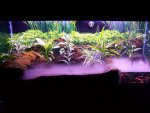i_love_necturus
New member
- Joined
- Dec 13, 2006
- Messages
- 445
- Reaction score
- 12
- Points
- 0
- Location
- Rhode Island
- Country
- United States
- Display Name
- Ryan
Triops need fairly warm temps: 22° to 31°C (72° - 86°F). Which is generally to warm for newts. Plus triops would be food most likly for the newts and they don't live too long anyways.
By the way: I have kept white clouds with my mudpuppy, but only because they were left over from cycling the tank. I just figured that they'd become food, and I was right.
By the way: I have kept white clouds with my mudpuppy, but only because they were left over from cycling the tank. I just figured that they'd become food, and I was right.

 Axolotl Enthusiast
Axolotl Enthusiast Field Herper
Field Herper
